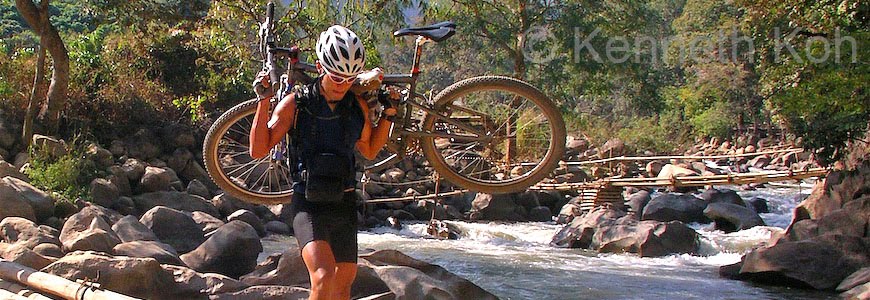Diving Sipadan, Malaysian Borneo
Sabah, East Malaysia, has heaps of potential for adventure tourism. A couple of top picks are a climb up Mt. Kinabalu, South East Asia's tallest mountain, and diving Sipadan, rated one of the top places in the world to dive. If you've got a week, you can do them both!
Sunrise on the Summit of Mt. Kinabalu
Day 1
Pick up from your hotel in Kota Kinabalu and drive 2 hours to Mt. Kinabalu National Park, where you will register for the climb and pick up your guide. It is about a 5 hour climb up to Laban Rata hut where you will spend the night.
Descending Mt. Kinabalu
Day 2
The day begins with an early 2:30am pre-dawn hike up the hill using headlamps. It takes about 3 hours to reach the Low's Peak summit, and if you time it right, you should arrive in time for sunrise. Then it is a long, knee-busting hike back to the hut for breakfast, and then all the way down. The day ends with you being dropped off back to your hotel in Kota Kinabalu.
Kapalai Island Resort
Day 3
Take a 45-minute flight to Tawau, and transfer to speedboat for another 45 minutes. We stayed at the Kapalai Island resort, which is a resort built on stilts over the reef. It is absolutely gorgeous! We saw turtles and a small Manta or Devil Ray right from our room! If you've arrived in the morning, you can do the required orientation dive at the Kapalai 'house reef' that afternoon.
Diving off the 'Oil Rig' at Mabul
Day 4
Permits to dive at Sipadan are scarce. The park controls the number of visitors and allow only 120 divers a day. Kapalai Resort is allowed 14 divers a day. Generally, a 3 night stay at Kapalai Resort will entitle you to 1 day's diving at Sipadan. The rest of the dives are done at the other nearby island reefs, such as Kapalai, Mabul and Siamil.
Diver below a ball of schooling Jack fish, Sipadan.
Day 5
The boat leaves Kapalai at 5:30am so that you are ready to sign in when the office opens at 6am on Sipadan Island. No time is wasted, and you'll get 4 dives while at Sipadan. The diving at Sipadan is outstanding. The other reefs pale in comparison. While your time at the other reefs is spent poking around in the sand looking for macro life, at Sipadan, there's plenty to see: Turtles, sharks, schooling Jack and barracuda are everywhere.
Ho Hum... Another Green Turtle...
Day 6
This is a non-diving day to allow for the 24 hours recommended between diving and flying. Depart Kapalai by speedboat, transfer back to the airport and fly back to Kota Kinabalu.
BBQ night at Kapalai Resort
Day 7
Leave Borneo for home :o(










